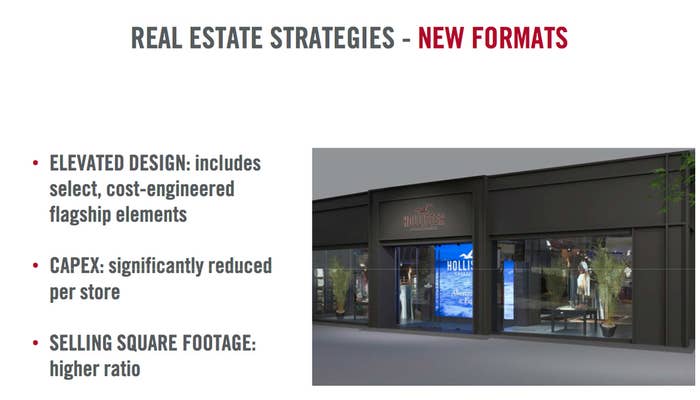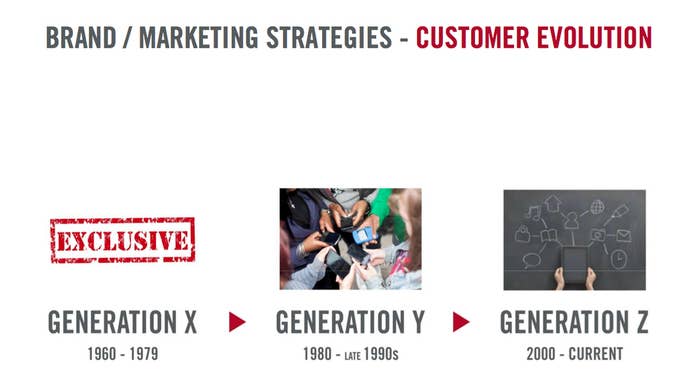
One of the clearest signs of Abercrombie & Fitch's recent struggles? Hollister Co. is testing glass storefronts early next year, and if they work, may ultimately ditch the iconic surf club-inspired porches.
The windows will help in "reenergizing Hollister storefronts," David Leino, Abercrombie's senior vice president of real estate, said at a meeting with analysts today. "We think it will help drive customer excitement, traffic, and conversion as she walks by and sees all those amazing female tops. We will test these stores in early 2014. Upon success, we will deploy as appropriate."
Abercrombie considers its stores the company's main point of sales and most important marketing vehicle. The porch storefront at Hollister — and the nightclub-like, blaring atmosphere of Abercrombie & Fitch stores — were designed to make young shoppers feel as though they were entering unique and exclusive destinations. Both brands were so hip that, unlike most every other retailer in the mall, they didn't need to display their wares in the windows. In fact, that made them even cooler and more attractive among their teen customers.
But, as the brand appeal of both Abercrombie and Hollister has waned with U.S. teens, who have more options and less cash than ever before, they can no longer count on that traffic. Yesterday, Abercrombie said that third-quarter sales plunged 12% to $1.03 billion, and its comparable sales — including purchases online and at stores open at least a year — tumbled 14%, the seventh straight quarterly drop.

Thus, Hollister can no longer hide its merchandise from shoppers.
The new Hollister stores will be "more engaging" and offer more selling space, said Craig Brommers, the retailer's new senior vice president of marketing. They'll also include video screens, he said.
Brommers noted that early on in Abercrombie's history, the company "targeted Gen X consumers who embraced exclusivity, standardization, brand loyalty." Millennials, however, place a greater value on "inclusivity and diversity, are budget-conscious, and have relatively low brand loyalty," he said. The youngest group of consumers, Generation Z, he said, are more concerned than both of those generations with their "unique personal brands."
Changing the storefronts of Hollister and allowing customers to see inside the stores is a part of Abercrombie's goal of realizing these changes, he said.
It shows some flexibility on the part of Chief Executive Officer Mike Jeffries, 69, who's notoriously obsessive about the stores and the image of each of Abercrombie's brands. He has drawn substantial criticism for his excessively hands-on management style in the past year, especially as the women's side of the business has seriously faltered and the company has been forced to shut down its fledgling Gilly Hicks underwear brand's standalone stores.
Jeffries, when asked about the expiration of his latest employment agreement in February 2014, told analysts today, "I expect to be here." He also noted that he has a strong succession plan in place, which is contrary to what multiple sources inside and outside of the company have told BuzzFeed.
Abercrombie describes Hollister as "the fantasy of Southern California" in annual filings. "It's all about hot lifeguards and beautiful beaches. Young and fun, with a sense of humor, Hollister never takes itself too seriously. Hollister's laidback lifestyle and All-American image is timeless and effortlessly cool. Hollister brings Southern California to the world."
The retailer had 594 Hollister stores and 285 Abercrombie stores at the end of July. A judge recently ordered the company to modify about half of its Hollister stores with steps to make them more accessible for disabled shoppers in the next few years.
